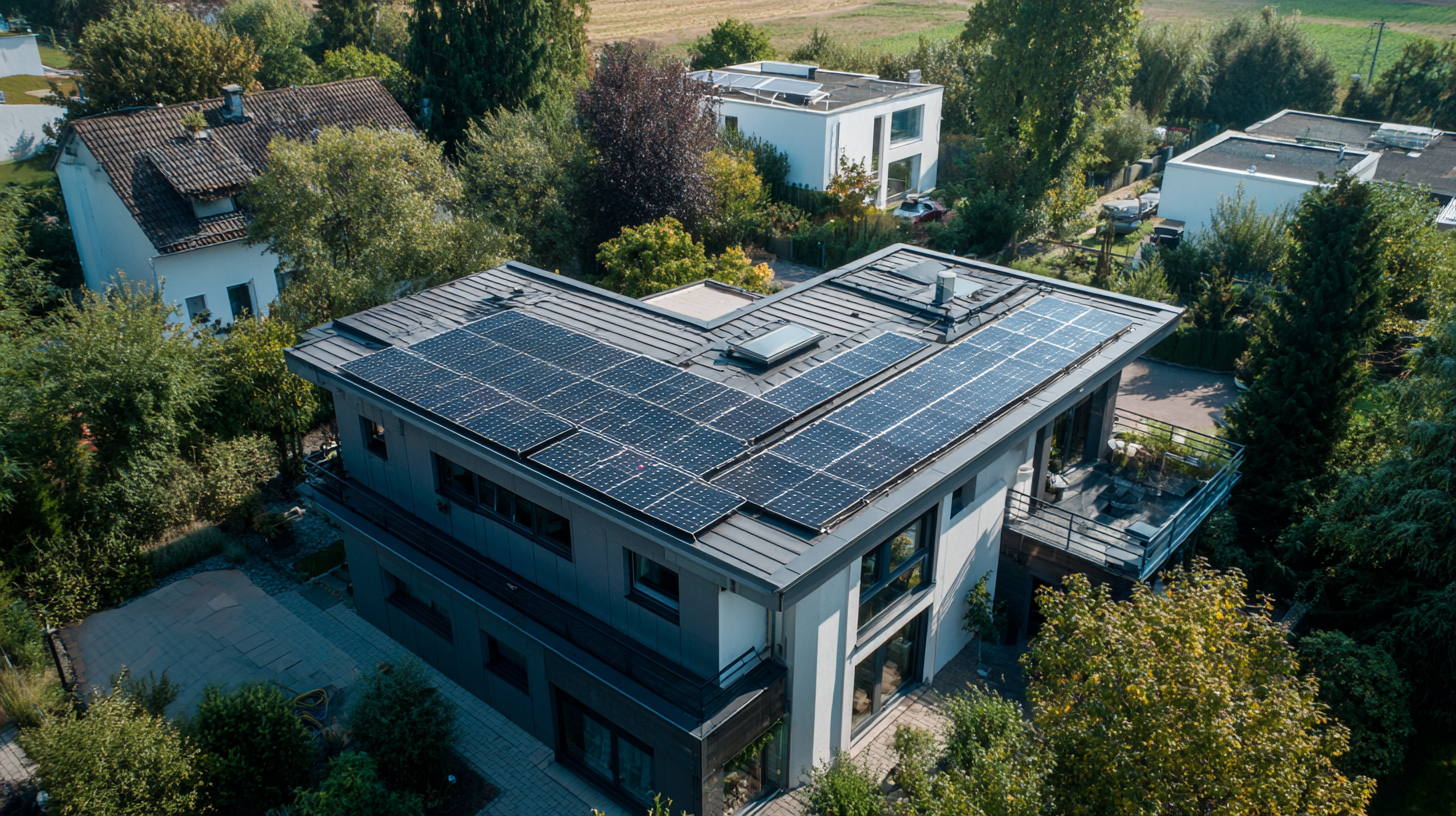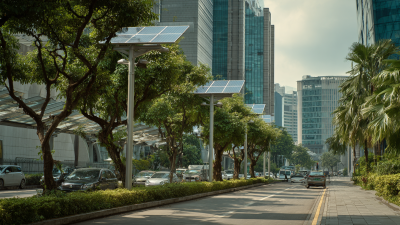Revolutionizing Renewable Energy: The Future of Smart Solar Technology Explained
As the global demand for renewable energy surges, smart solar technology is emerging as a game-changer in the quest for sustainable power solutions. According to a recent report by the International Energy Agency (IEA), solar energy capacity is projected to increase by more than 600% by 2040, underscoring its crucial role in the transition to a low-carbon economy. Smart solar systems leverage advanced technologies, such as artificial intelligence and machine learning, to optimize energy generation and consumption, significantly improving efficiency. The smart solar market is estimated to reach $23 billion by 2025, reflecting a compound annual growth rate (CAGR) of 20%, as reported by Allied Market Research. This explosive growth signals not only the potential of smart solar to transform energy systems but also its capacity to enhance grid stability and facilitate the integration of renewable resources. In this context, understanding how to effectively implement and optimize smart solar solutions is imperative for stakeholders looking to lead in a future powered by renewable energy.

The Role of AI in Enhancing Solar Panel Efficiency
The integration of artificial intelligence (AI) in solar technology has the potential to significantly enhance the efficiency and performance of solar panels. According to a report by the
International Energy Agency (IEA), solar energy could account for up to 40% of global electricity generation by 2040, making advancements in panel efficiency crucial.
AI-driven algorithms are being developed to analyze vast amounts of data related to weather patterns, energy consumption, and solar panel performance. This data analysis enables predictive maintenance
and optimization strategies, which can lead to a 20-30% increase in energy output, as suggested by a study from McKinsey & Company.
Furthermore, AI can enhance the capabilities of solar inverters through real-time monitoring and adaptive learning processes. These systems can automatically adjust operations to minimize downtime and optimize energy conversion efficiency.
The U.S. Department of Energy reports that improvements in inverter technology, driven by AI, have already resulted in significant gains in overall solar system performance, highlighting a trend toward smarter energy solutions.
As we increasingly rely on renewable sources, AI's role in maximizing solar panel efficiency will be instrumental in shaping a sustainable energy future.
Integrating IoT for Real-Time Solar Energy Management
The future of solar technology is being dramatically reshaped by the integration of the Internet of Things (IoT), paving the way for advanced real-time solar energy management systems. As more households adopt smart energy management systems (HEMS), the market is projected to grow significantly, reaching a valuation of $5.382 billion by 2025 and an astounding $19.98 billion by 2033, with a compound annual growth rate (CAGR) of 17.82%. This rapid growth reflects a global shift towards intelligent energy solutions that enhance efficiency and sustainability.
The collaboration between innovative solar solutions and smart energy meters exemplifies this trend. For instance, the integration of solar kits with intelligent energy measurement solutions allows for real-time monitoring and optimization of energy consumption. This aligns with the broader market transition toward software-defined energy management, moving away from traditional hardware-centric approaches. The emergence of AI-driven energy management further emphasizes the importance of automation and predictive analytics, solidifying the role of IoT in creating smarter, more resilient energy systems for the future.
Revolutionizing Renewable Energy: The Future of Smart Solar Technology Explained
| Dimension | Data |
|---|---|
| Average Solar Panel Efficiency (%) | 20.4 |
| Projected Global Solar Energy Capacity by 2030 (GW) | 4500 |
| IoT Devices Utilized in Solar Energy Management | 500 million |
| Average Cost of Solar Energy per kWh (USD) | 0.05 |
| Increase in Solar Adoption Rate (2010-2023, %) | 1500 |
| Expected Reduction in Carbon Footprint per Solar Installation (Tons/Year) | 5.3 |
Blockchain Technology: Securing Solar Energy Transactions
Blockchain technology is paving the way for secure and efficient solar energy transactions, fundamentally transforming the renewable energy landscape. By enabling decentralized networks, blockchain allows for transparent tracking of energy production and consumption, ensuring that all transactions are immutable and easily verifiable. According to a report by Allied Market Research, the global blockchain in the energy market is projected to reach $7.1 billion by 2027, showcasing the growing confidence in this technology's potential to enhance renewable energy systems.
In the context of solar energy, blockchain can facilitate peer-to-peer energy trading, empowering consumers to buy and sell excess energy directly with one another. This model not only increases the efficiency of energy distribution but also promotes greater adoption of solar technologies. A study by Siemens predicts that by 2030, blockchain could enable up to 60% of residential energy consumers to participate in local energy markets, thus democratizing energy access and contributing to a more sustainable future. The integration of blockchain with smart solar technologies represents a significant step towards optimizing renewable energy usage and promoting a decentralized energy economy.

Innovative Materials Transforming Solar Panel Design
The landscape of solar technology is rapidly evolving, driven by innovative materials that promise to enhance efficiency and sustainability. One of the most exciting developments is the advent of ultra-thin solar panels employing advanced crystal structures. Researchers in Germany have made significant strides in this area, achieving an astonishing 1,000-fold increase in efficiency. These ultra-thin designs not only reduce material costs but also offer greater flexibility for integration into urban infrastructures, making them ideal for densely populated areas where traditional solar panels may not be feasible.
Another breakthrough comes from the exploration of perovskite materials, often referred to as "wonder materials" in the solar industry. These materials have shown remarkable promise in increasing the performance of solar cells, paving the way for a new generation of efficient solar energy solutions. As scientists delve deeper into the properties of perovskite, some believe we are on the cusp of a solar energy revolution that could redefine how we harness and utilize the sun's power. Combined with other advances, such as artificial leaves that convert CO2 into useful chemicals or new organic molecules that enhance energy harvesting, the future looks bright for smart solar technology.
Revolutionizing Renewable Energy: The Future of Smart Solar Technology
This bar chart illustrates the significant growth in global solar energy capacity from 2018 to 2023, highlighting the transformative impact of innovative solar technologies and materials in reshaping the renewable energy landscape.
Predictive Analytics for Optimizing Solar Energy Production
The global solar energy market is poised for significant growth, projected to expand from $25.69 billion in 2023 to $436.36 billion by 2032, reflecting a compound annual growth rate (CAGR) of 6%. As the push for renewable energy intensifies, innovative technologies such as predictive analytics play a crucial role in optimizing solar energy production. By leveraging artificial intelligence, stakeholders in the solar industry can enhance energy production forecasting, network management, and maintenance predictions, leading to more efficient energy use and reduced costs.
Companies like Plantae are at the forefront of this transformation, utilizing AI-driven predictive models to accurately determine irrigation needs for crops, which parallels the advancements in solar technology. The implementation of predictive analytics not only improves the efficiency of solar energy systems but also contributes to sustainable agricultural practices by ensuring that water usage is optimized. As artificial intelligence continues to reshape energy production and management, the integration of these advanced technologies promises to unlock new levels of efficiency and effectiveness within the renewable energy sector, driving a more sustainable future.

Related Posts
-

Transform Your Energy Savings: The Rising Impact of LED Solar Technology on Sustainable Homes
-

Transforming Urban Lighting: The Rise of Solar Street Lamps and Their Impact on Energy Savings
-

Illuminate Your Outdoors with Solar LED Lights for a Sustainable Lifestyle
-

Harnessing the Sun Exploring the Benefits of Solar Powered Lights for Sustainable Living
-

The Future of Urban Lighting Exploring the Benefits of Solar Street Light Technology
-

Unleashing the Power of the Sun: How Solar Powered Lights Transform Outdoor Spaces
